November Walking Tour – Mono no Aware: Appreciating Transience in Shofu-en
As we move from October to November, we see the end of many of our visitors’ favorite time of year at the Gardens. With fall color fading and Halloween displays ending, we see gardens and gardeners take a rest during this quieter season. I urge you to take some time to appreciate the change in the weather and season.
Within the Japanese language, the phrase “mono no aware” directly translates to “the feeling of things,” but has a deeper cultural meaning that my volunteers and I attempt to illustrate within 松風園 Shofu-en Japanese Garden. As opposed to the literal translation, the cultural translation that I have found used most often is “a sensitivity to ephemera.” To illustrate this idea, one might think of an individual crafting an ikebana arrangement, and the tendency of those in the art form to prefer the slightly opened bud to the twig in peak flower.
Traditions like momijigari (literally “red leaf hunting”) and the viewing of the short-lived cherry blossom flowers in spring are also based on this principle, and these plants are seen as more valuable for how short-lived their showy season is. Perhaps the most well-known example of this appreciation of transience is the traditional system of 72 kō (候) or “micro seasons.” These seasons last an average of five days, and have distinct poetic descriptions such as “chrysanthemums bloom,” “crickets chirp by the door” or “maple leaves and ivy turn yellow.” This appreciation of change, though slightly melancholy, is something all plant-lovers can apply to any garden.
- Starting from the Bill Hosokawa Bonsai Pavilion and Tea Garden, walk past the dry garden and through the main gate until you reach the connecting path. Looking southwest on a sunny day, the Cheesman Park pavilion and Mount Blue Sky can be seen.
- Turning to the right and moving west, one can peek up under the canopy of two Amur maples (Acer tataricum) and one Russian hawthorn (Crataegus ambigua). Take a moment to look up from directly under these trees, appreciating the calligraphic structure of the maples and any remaining fruit on the hawthorn.
- From here, move forward to our moon-viewing deck. Notice the stillness and reflection of the water and the tops of the needles of the ponderosa pines as they move in the wind, or perhaps look to the right to notice the remaining stems and seed heads of the lotus (Nelumbo).
- Directly behind this, there stands a large Ginkgo biloba. Notice the characteristic golden leaves of this tree scattered about, and the way the veins of these leaves never intersect.
- Moving to the west, take the stepping-stone path to the right. This space holds a large crabapple variety, Malus × gloriosa ‘Oekonomierat Echtermeyer’ with fruit that should be falling any day now. Notice the coarseness and sharp turns of the branches in this weeping tree.
- Exiting the stepping-stone path, take a moment to appreciate the lines raked in the stone. Notice how they emulate ripples in water, and how they disappear as the wind blows and little feet explore the garden.
- Moving west, walk through the gate and stop for a moment on the bridge to the east. Notice the brilliant white texture of these birch trees, and the water moving below.
- Finally, enter the garden from the entrance across from the Laura Smith Porter Plains Garden. Listen to the sound of the water as it crashes down from the waterfall. Take a left and take a seat at the azumaya (gazebo). Notice the remaining petals on the chrysanthemums surrounding your seat and enjoy the rest of your autumn day in the Gardens.
This article and photos were contributed by Henry Basile, assistant curator of the Japanese Garden.
Gallery
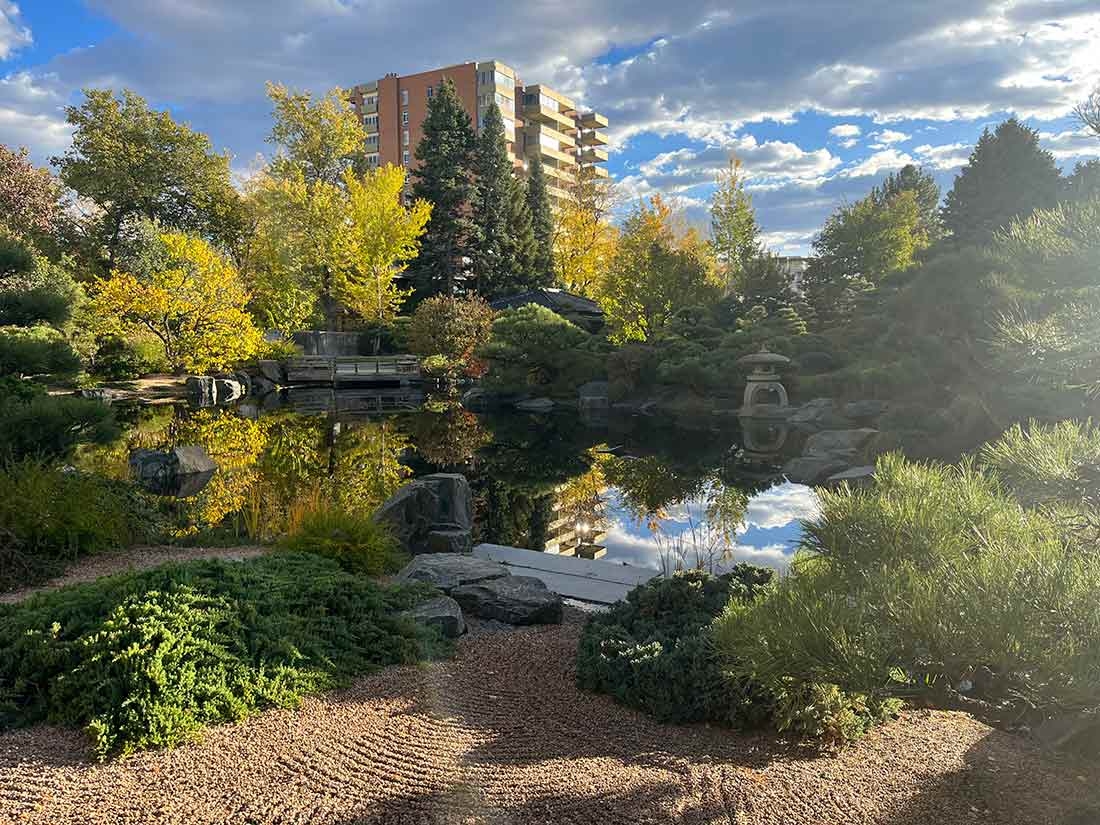
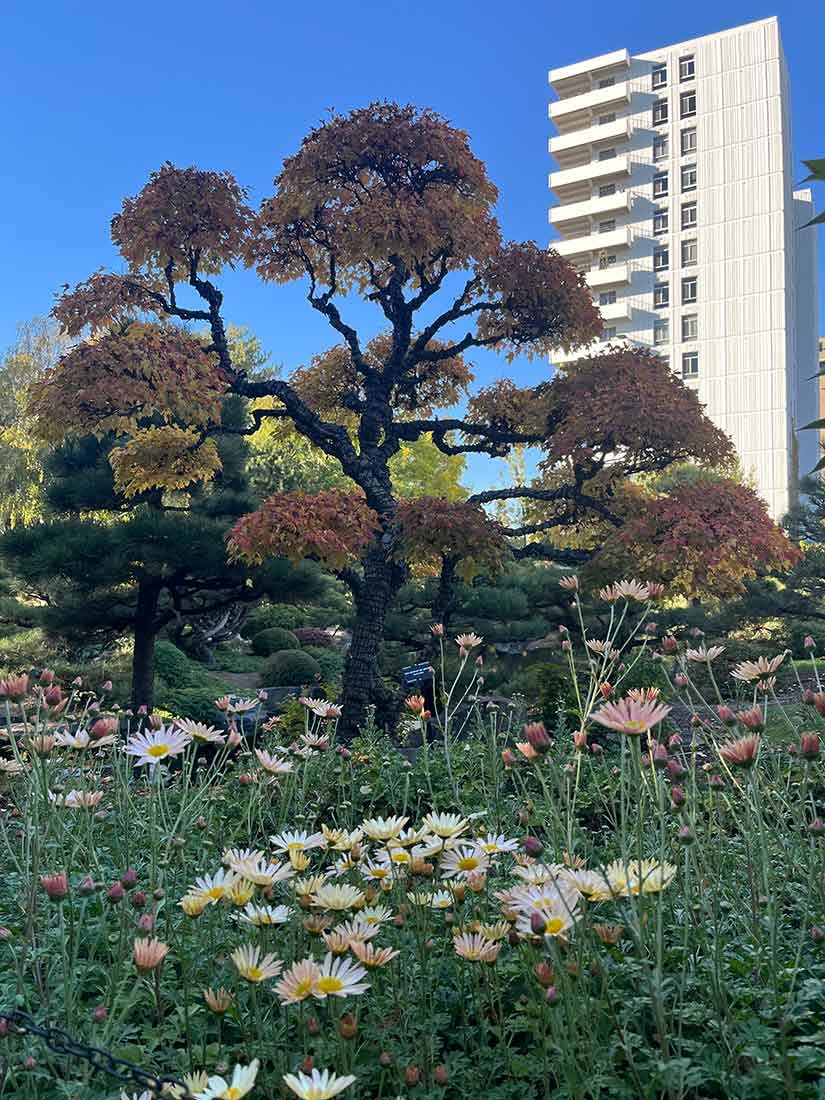
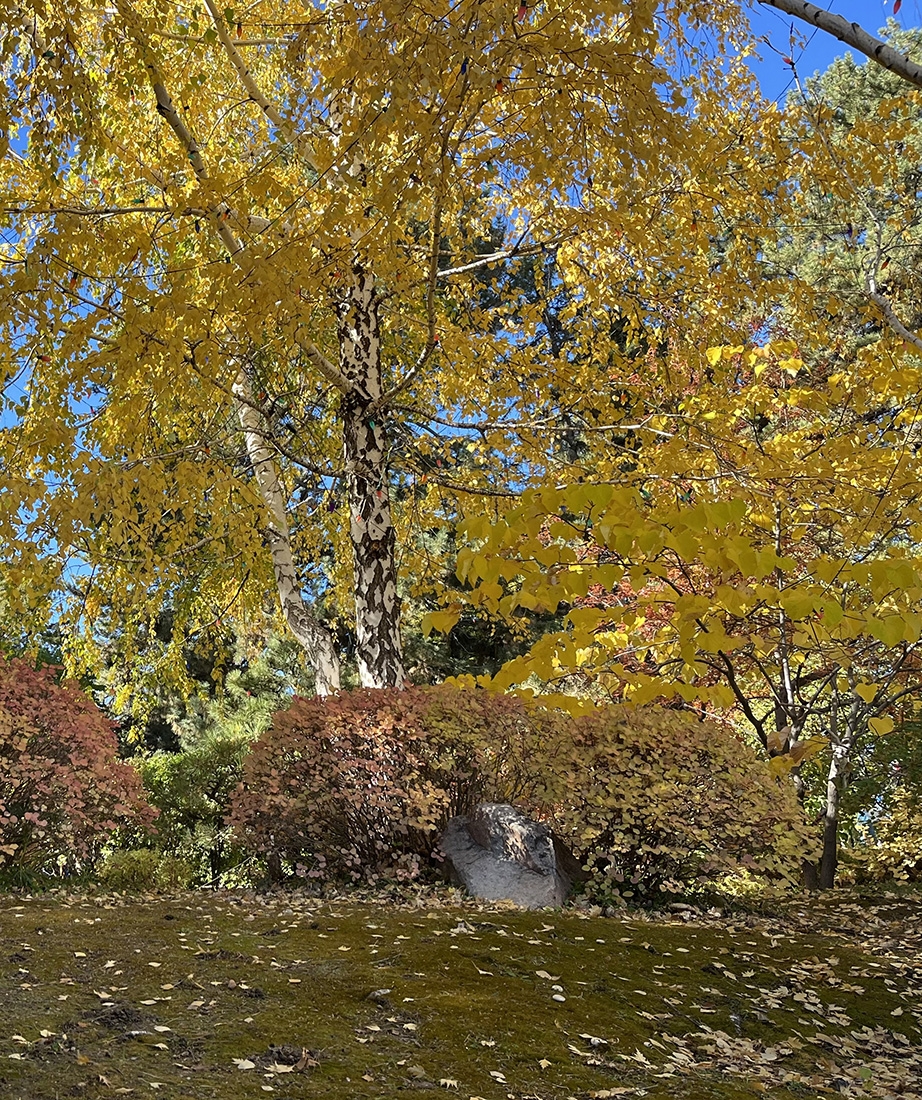
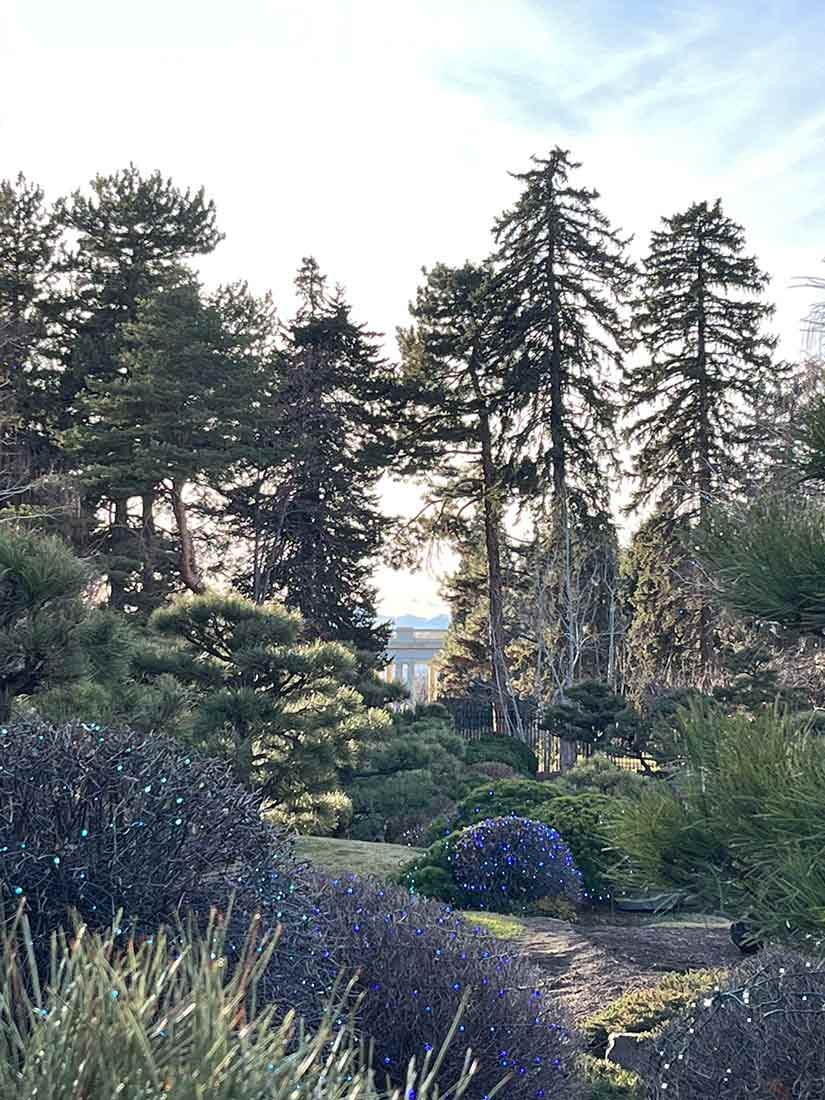
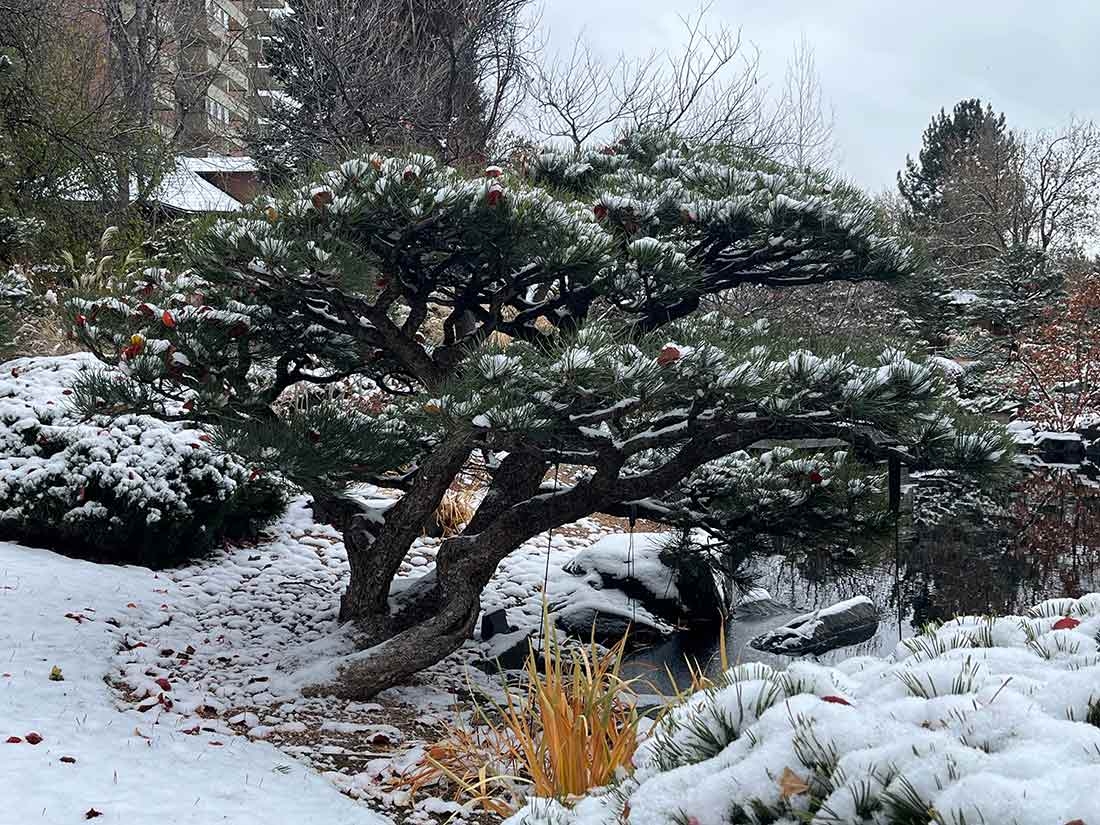
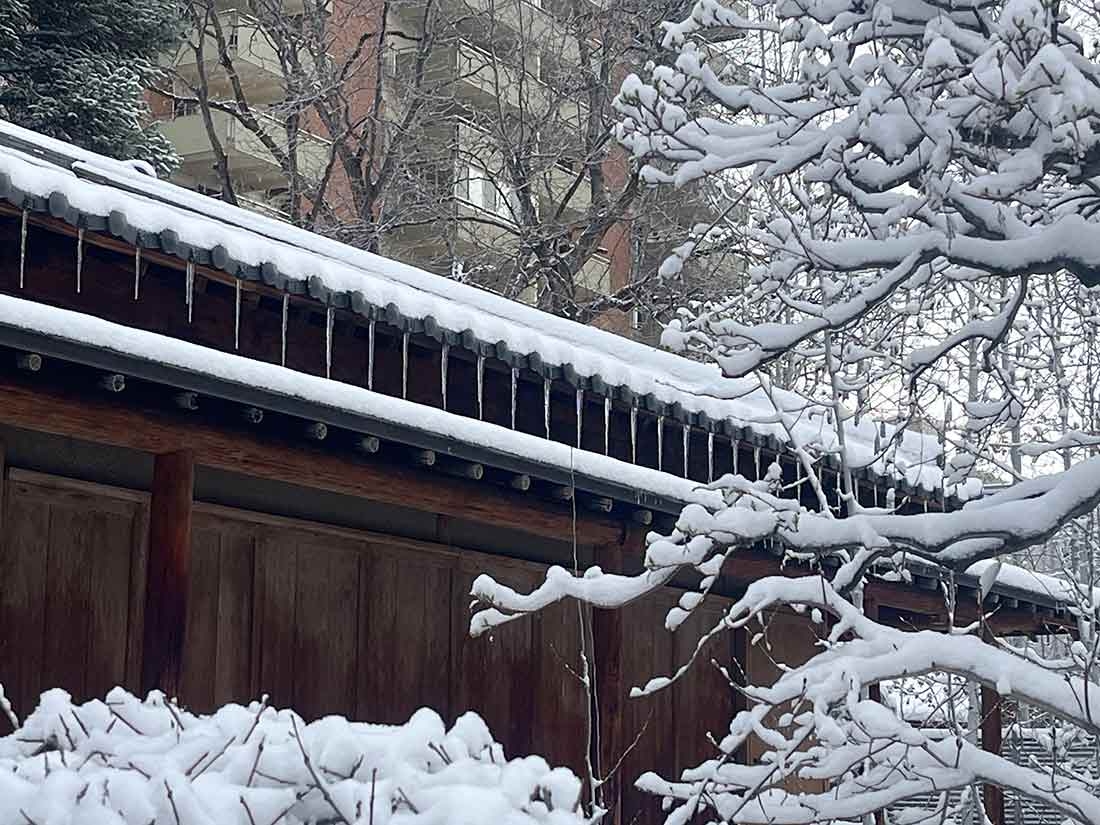
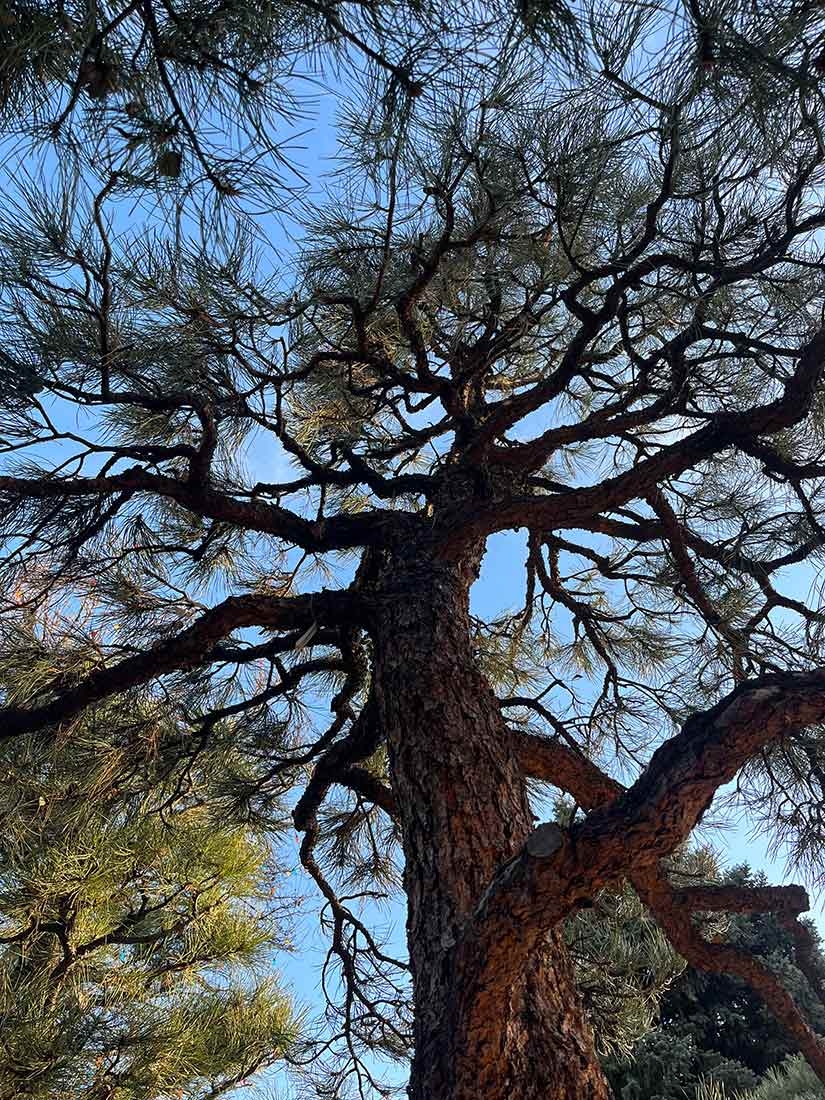
Add new comment